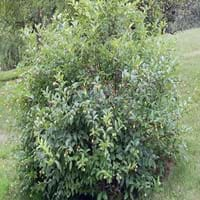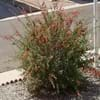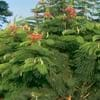Life Span
Annual and Perennial
Perennial
Type
Shrub
Flowering Plants, Fruits, Trees
Origin
South Africa
Central Asia
Types
Not Available
Aceymac apple, Bailey Sweet apple, Dabinett apple, Nehou apple
Number of Varieties
Not Available
Habitat
Boggy areas, Dappled Shade, Shady Edge, Sunny Edge, Woodland Garden Canopy
Hillside
USDA Hardiness Zone
9-11
5-8
Sunset Zone
H1, 14, 15, 16, 17, 18, 19, 20, 21, 22, 23, 24
A1, A2, A3, 8, 9, 10, 11, 12, 13, 14, 15, 16, 17, 18, 19, 20, 21, 22, 23, 24
Habit
Upright/Erect
Oval or Rounded
Flower Color
Light Yellow, Ivory
White
Flower Color Modifier
Not Available
Not Available
Fruit Color
Brown
Green, Red
Leaf Color in Spring
Green
Dark Green
Leaf Color in Summer
Green
Green
Leaf Color in Fall
Green
Brown, Green, Light Yellow
Leaf Color in Winter
Green
Not Available
Leaf Shape
Egg-shaped
Oblong
Plant Season
Spring, Summer, Fall, Winter
Spring
Sunlight
Full Sun, Partial Sun
Full Sun, Partial shade
Growth Rate
Medium
Medium
Type of Soil
Loam, Sand
Loamy
The pH of Soil
Acidic, Neutral
Neutral
Soil Drainage
Average
Well drained
Bloom Time
Early Spring, Spring, Late Spring, Winter, Late Winter
Fall, Summer
Tolerances
Wet Site
Drought
Where to Plant?
Ground, Pot
Ground
How to Plant?
Seedlings, Stem Cutting
Grafting, Seedlings, Transplanting
Plant Maintenance
Medium
Medium
Watering Requirements
Requires 4 to 8 inches of water above the soil line
Medium
In Summer
Lots of watering
Lots of watering
In Spring
Moderate
Moderate
In Winter
Average Water
Average Water
Soil pH
Acidic, Neutral
Neutral
Soil Type
Loam, Sand
Loamy
Soil Drainage Capacity
Average
Well drained
Sun Exposure
Full Sun, Partial Sun
Full Sun, Partial shade
Pruning
Prune in early summer, Remove damaged leaves, Remove dead branches, Remove dead leaves, Trim each shoot back to the first set of leaves
Prune when plant is dormant, Remove dead or diseased plant parts
Fertilizers
All-Purpose Liquid Fertilizer
All-Purpose Liquid Fertilizer
Pests and Diseases
Red blotch
Aphids, Canker, Caterpillars, Powdery mildew, Root rot
Plant Tolerance
Wet Site
Drought
Flower Petal Number
Not Available
Single
Fragrant Flower
Not Available
Yes
Fragrant Leaf
Not Available
No
Fragrant Bark/Stem
Not Available
No
Foliage Texture
Fine
Medium
Foliage Sheen
Matte
Matte
Attracts
Butterflies
Birds
Allergy
Toxic
Mouth itching, Throat itching
Aesthetic Uses
Showy Purposes
Not Used For Aesthetic Purpose
Beauty Benefits
Not Available
Not Available
Environmental Uses
Air purification
Air purification
Medicinal Uses
Astringent, Diaphoretic, Diuretic, Emetic, Febrifuge, Laxative, Odontalgic, Ophthalmic, Tonic
Cancer, constipation, Diabetes, Diarrhea, Dysentry, Fever, Heart problems, Tooth ache
Part of Plant Used
Bark, Fruits, Inner Bark, Root, Wood
Fruits
Other Uses
Used for woodware
Used As Food, Wood is used for making furniture
Used As Indoor Plant
No
No
Used As Outdoor Plant
Yes
Yes
Garden Design
Bog Garden, Cutflower, Dried Flower, Everlasting, Feature Plant, Mixed Border, Tropical
Fruit / Fruit Tree, Shade Trees, Showy Tree
Botanical Name
BERZELIA lanuginosa
Malus domestica
Common Name
Buttonbush
Apple Tree
In Hindi
Buttonbush shrub
सेब का वृक्ष
In German
Button Strauch
Apfelbaum
In French
buttonbush arbuste
Pommier
In Spanish
arbusto buttonbush
Manzano
In Greek
Buttonbush θάμνος
μηλιά
In Portuguese
arbusto Buttonbush
Macieira
In Polish
Buttonbush krzew
jabłoń
In Latin
Frutex Buttonbush
Arbore
Phylum
Magnoliophyta
Magnoliophyta
Class
Magnoliopsida
Magnoliopsida
Family
Bruniaceae
Rosaceae
Clade
Angiosperms, Asterids, Eudicots
Angiosperms, Eudicots, Rosids
Tribe
Not Available
Not Available
Subfamily
Not Available
Not Available
Number of Species
Not Available
Season and Care of Buttonbush and Apple Tree
Season and care of Buttonbush and Apple Tree is important to know. While considering everything about Buttonbush and Apple Tree Care, growing season is an essential factor. Buttonbush season is Spring, Summer, Fall and Winter and Apple Tree season is Spring, Summer, Fall and Winter. The type of soil for Buttonbush is Loam, Sand and for Apple Tree is Loamy while the PH of soil for Buttonbush is Acidic, Neutral and for Apple Tree is Neutral.
Buttonbush and Apple Tree Physical Information
Buttonbush and Apple Tree physical information is very important for comparison. Buttonbush height is 365.76 cm and width 182.88 cm whereas Apple Tree height is 25.00 cm and width 20.00 cm. The color specification of Buttonbush and Apple Tree are as follows:
Buttonbush flower color: Light Yellow and Ivory
Buttonbush leaf color: Green
Apple Tree flower color: White
- Apple Tree leaf color: Dark Green
Care of Buttonbush and Apple Tree
Care of Buttonbush and Apple Tree include pruning, fertilizers, watering etc. Buttonbush pruning is done Prune in early summer, Remove damaged leaves, Remove dead branches, Remove dead leaves and Trim each shoot back to the first set of leaves and Apple Tree pruning is done Prune when plant is dormant and Remove dead or diseased plant parts. In summer Buttonbush needs Lots of watering and in winter, it needs Average Water. Whereas, in summer Apple Tree needs Lots of watering and in winter, it needs Average Water.





